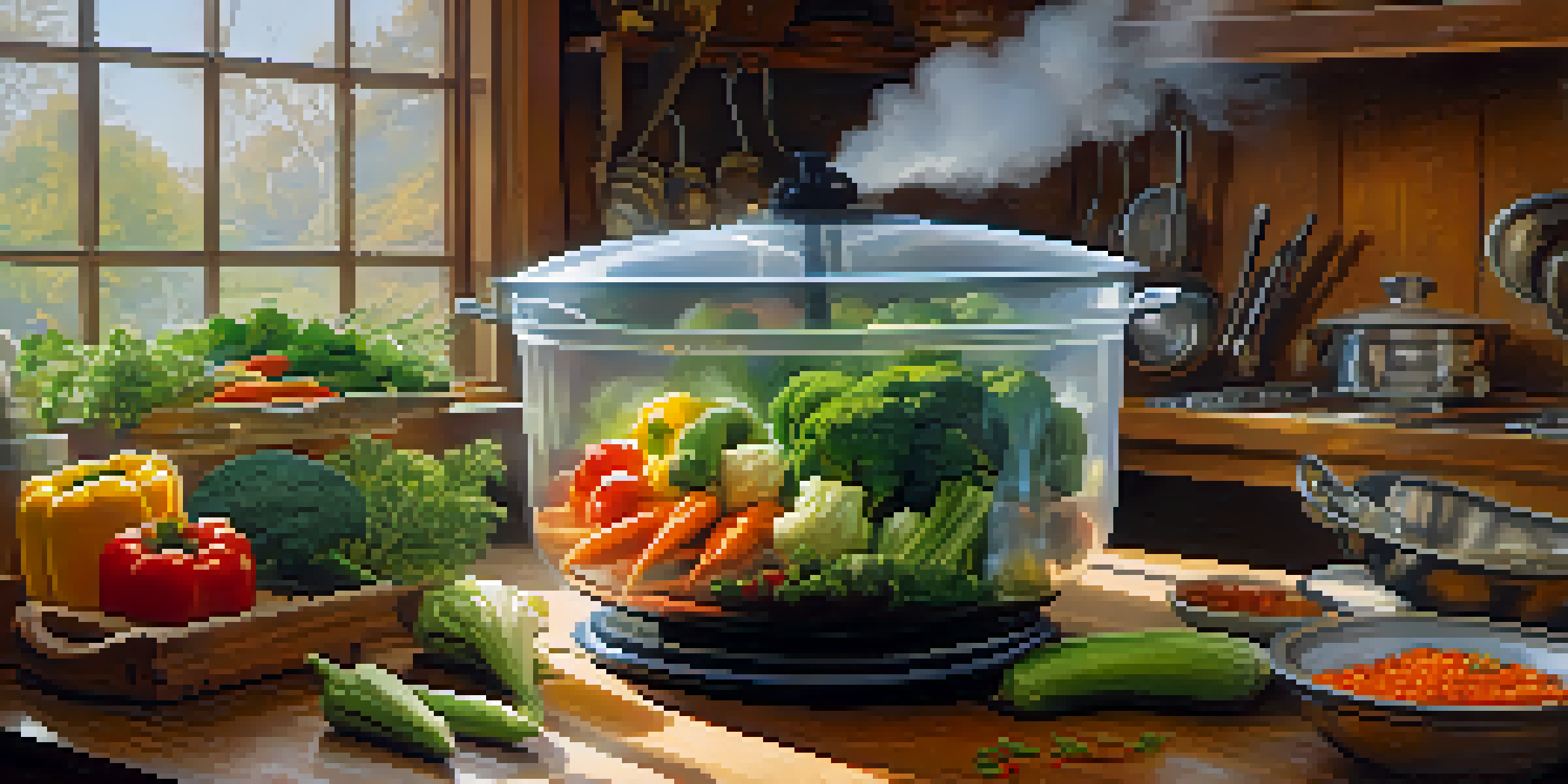Cooking Methods: How Techniques Change Food Nutritional Value

Understanding Nutritional Value in Food
Nutritional value refers to the benefits food provides to our bodies, including essential vitamins, minerals, proteins, and fats. Each food item has its own unique nutritional profile, which can be influenced by how it's prepared and cooked. For example, cooking methods can either enhance or diminish the bioavailability of nutrients, meaning how well our bodies can absorb and utilize them.
Boiling: The Basics and Nutritional Loss
Boiling is one of the simplest cooking methods, involving immersing food in water at high temperatures. While it can soften vegetables, boiling can lead to significant nutrient loss, especially with water-soluble vitamins like vitamin C and certain B vitamins. When you boil vegetables, many of these vitamins leach into the water, which is often discarded.
Cooking Methods Impact Nutrition
Different cooking methods can significantly affect the nutritional value of food, influencing how well our bodies absorb essential nutrients.
Steaming: A Healthier Alternative
Steaming has gained popularity as a healthier cooking method, as it allows food to cook without direct contact with water. This method helps preserve nutrients because the food is cooked by the steam rather than submerged in water. As a result, steaming retains more vitamins and minerals, making it a great option for vegetables and fish.
Sautéing and Stir-Frying: Quick and Nutritious
Sautéing and stir-frying involve cooking food quickly over high heat with a minimal amount of oil. These methods not only enhance flavor but also maintain the nutritional value of the food. By cooking quickly, you prevent overcooking, which can lead to nutrient loss, especially in vegetables.
Steaming Retains More Nutrients
Steaming is a healthier cooking option that preserves more vitamins and minerals compared to boiling.
Roasting: Flavor Meets Nutrition
Roasting is a dry-heat cooking method that can intensify flavors while keeping nutrients intact. This technique caramelizes sugars in the food, enhancing its taste without significant nutrient loss. However, keep in mind that over-roasting can lead to the breakdown of certain vitamins, so it’s important to find that perfect balance.
Grilling: Preserving and Enhancing Nutrients
Grilling not only imparts a delicious smoky flavor but can also help retain nutrients. The high heat cooks food quickly, which can preserve vitamins and minerals while allowing excess fat to drip away. However, it's essential to avoid charring the food too much, as this can lead to harmful compounds forming.
Quick Cooking Preserves Nutrients
Methods like sautéing and microwaving allow for quick cooking, which helps maintain the nutritional integrity of food.
Microwaving: Quick Cooking with Nutritional Benefits
Microwaving is often overlooked as a cooking method, but it can be one of the best ways to preserve nutrients. It uses shorter cooking times and minimal water, which helps maintain the integrity of vitamins and minerals. This method is particularly effective for steaming vegetables in a microwave-safe container, making it a convenient option for busy lifestyles.
Conclusion: Choosing the Right Method for Nutrition
Understanding how different cooking methods affect nutritional value empowers you to make healthier choices in the kitchen. By opting for techniques like steaming, sautéing, and grilling, you can maximize the nutrients in your meals. Ultimately, the key is to balance flavor and health, ensuring you enjoy the food you eat while reaping its nutritional benefits.